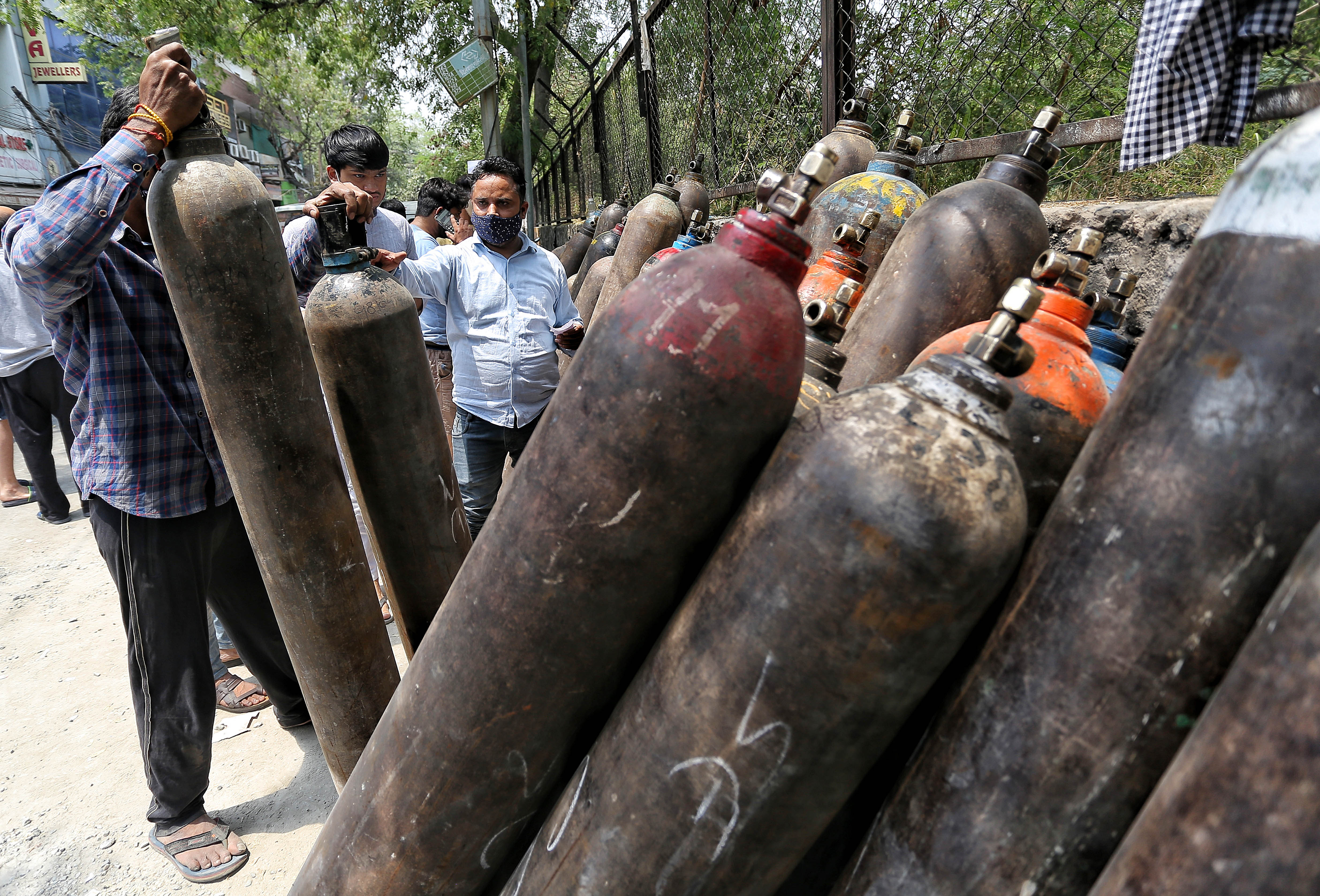The Delhi government app is giving old information about bed availability, say hospitals.
New Delhi: As India wades through the interminable surge in the Covid-19 cases, healthcare in the national capital is overwhelmed owing to the acute shortage of medical amenities like oxygen, hospital beds, and intensive care equipment. Multitudes of patients are left gasping for breath while their next of kin plead for their treatment outside the overbooked hospital premises.
The Sunday Guardian spoke to myriad hospital authorities and patients across Delhi to realise that hospitals in the region have run out of beds, ventilators, and even worse, oxygen supplies.
On Friday afternoon, the Delhi government’s corona app displayed the availability of more than 1,116 beds in the hospitals. However, most of these hospitals, when reached by the correspondent, denied the availability of any beds. Patients, running from one hospital to the other in pursuit of treatment often die en route.
The Sunday Guardian spoke to the authorities of B.L. Kapoor hospital, located in Central Delhi, and came to know that there were no oxygen beds left in the facility. However, the Delhi government’s official app mentioned that the hospital had 40 vacant beds on Friday.
The concerned person who answered the phone call hung up shortly after saying: “We don’t have any beds. The information you are seeing on the app is not up to the date.”
The Ganga Ram managed City Hospital of Pusa Road also denied having any bed. When contacted, they confessed that all their beds are currently occupied, and that the data being shown on the Delhi government’s corona application was “old”.
The corona app showed that the hospital had 20 vacant beds. As the oxygen saturation levels of the Covid-19 patients drop alarmingly (a condition called hypoxemia), the attendants run around in search of oxygen beds.
A man, whose father had developed severe hypoxemia, was pleading to the hospital staff outside the B.L. Kapoor hospital to attend to his father and provide him with emergency aid. Although the hospital staff complied to measure the vitals of the patient, they refused to admit him to the facility saying that they did not have any bed for him.The patient’s grief-stricken son told The Sunday Guardian that he had been running from one hospital to the other in search of a bed and finding none. “The ambulance in which I am ferrying around my father is also running out of oxygen. Where do I go?”
The scene outside the Delhi government-owned Lok Nayak Hospital is even worse. It has been a few days that the authorities have shut the main entrance of the hospital putting out the messages and signs indicating the non-availability of beds.The ambulances lined up outside the hospital with patients waiting for treatment. The authorities who do not have enough resources, ask the patients to return.
The emergency area outside the hospital was reverberating with the sobs and cries of the family members of the patients, who, sitting under the scorching sun, were pleading with the doctors to save their loved ones.
Similarly, hospitals like GTB, RML, Safdarjung, and others, are not admitting even critical patients amid the shortage of ventilators and oxygen.
Hospitals have never seen such a stupendous patient inflow before, and the dire dearth of medical facilities is making things worse.
The Delhi government, in the wake of the shortage of oxygen, announced that the city government has decided to import 18 oxygen tankers from Bangkok, Thailand, while France will send 21 ready-to-use oxygen plants.However, critics say that the administration is already late in responding to the crisis, as thousands of patients have already lost their lives.
Between 17 April and 30 April this, Delhi recorded a cumulative caseload of around 350,000 cases.
Even though the process of testing in the capital has gone down significantly, the test positivity rate here in Delhi has increased manifold. Delhi currently exhibits a test positivity rate of over 31%, meaning one in every three persons in Delhi is infected with the novel coronavirus.

